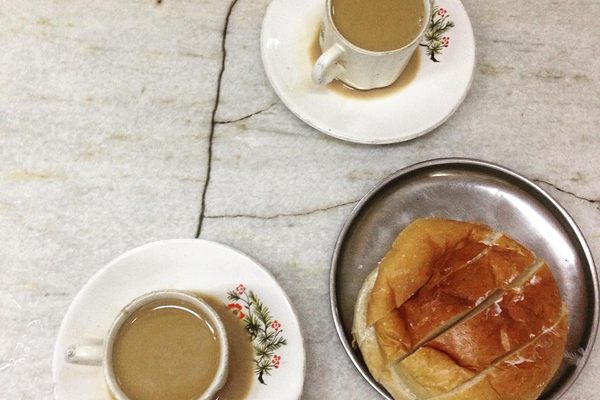Drinks
Horchata Lojana
Made from dozens of regional flowers and herbs, this tea reflects the unique flora of Loja, Ecuador.
You may associate horchata with the creamy, rice-based, cinnamon-studded drink common in Mexico. But horchata Lojana from Ecuador’s Loja province, is a far cry from the creamy Mexican staple. Hawked hot on street corners in the morning, and consumed cold with meals, Ecuadorian horchata has a vivid hibiscus color, with a floral, herbal taste enhanced with a hit of sour lemon, a lot of sugar, and sometimes a squeeze of aloe vera.
Locals claim horchata Lojana has medicinal properties, even calling the surrounding horchata-producing region the “Valley of Longevity” due to the belief that the valley’s residents live until they’re 100 years old. You can think of horchata Lojana as the distilled herbal knowledge of the region’s folk doctors and foragers.
Horchata’s journey to Ecuador began almost 4,500 years ago. The likely ancestor of modern-day horchata dates as far back as 2400 B.C.Egyptian papyrus records and jug fragments from the era show evidence of a beverage made of chufa, or the tigernut, eventually known in local Arabic as hab el aziz. When the Moors imported the chufa plant to Spain in the eighth century, the beverage became known as horchata, which the Spanish would later bring to the Americas. Today, the name describes a wide range of drinks consumed across the Spanish-speaking world, including a barley-based Spanish drink, Mexican rice-based horchata, and the Ecuadorian regional specialty.
The making of horchata Lojana starts with rural women, who collect herbs from the Andean countryside or grow them in their gardens. Botanists have identified 71 distinct types of herbs that can be used in various horchata Lojana mixtures, each believed by locals to have their own medicinal benefits. While the precise combination can vary based on the season, the weather, and what drinkers happen to have growing in their backyards, typical mixtures have around 20 to 30 herbs, and there are 16 herbs considered key to horchata Lojana, including cedrón (lemon verbena), verdolaga (purslane), albahaca (basil), and escancel (bloodleaf). The latter gives the drink its ruby color.
Traditionally, after collecting the herbs, women dry them or sell them fresh to street vendors, who in turn brew glasses of the drink. Locals can also purchase the dried herbs directly from traders, supplementing the mixture with whatever they happen to have growing in the garden. Increasingly, however, efforts to commercialize the tea threaten the livelihoods of these independent women entrepreneurs and threaten to standardize a recipe whose uniqueness is precisely due to to its diversity. While commercial availability may make horchata Lojana more accessible for curious gastronomes, there’s nothing like tasting the mixture straight from its source in Loja. Each glass contains not only the flowery elixir of authentic Andean flora, but the passed-down knowledge of the women who have been collecting and brewing these herbs for generations.
Where to Try It
-
Mercado Centro Comercial Loja
18 de Noviembre, Loja, 110150, EcuadorThe central market offers all kinds of local food, including glasses of horchata Lojana.
Written By
 Reina Gattuso
Reina Gattuso
Sources
- world.lisagermany.com/exploring-loja-food-ecuador/
- books.google.com/books?id=cylCU-pJHPIC&pg=PA262&dq=Hab%E2%80%99+el+aziz&hl=en&sa=X&ved=0ahUKEwj-r9zrxuTiAhULmuAKHZfnAr8Q6AEIMjAC#v=onepage&q=Hab%E2%80%99%20el%20aziz&f=false
- www.fondazioneslowfood.com/en/ark-of-taste-slow-food/hab-el-aziz/
- www.laylita.com/recipes/horchata-lojana/
















